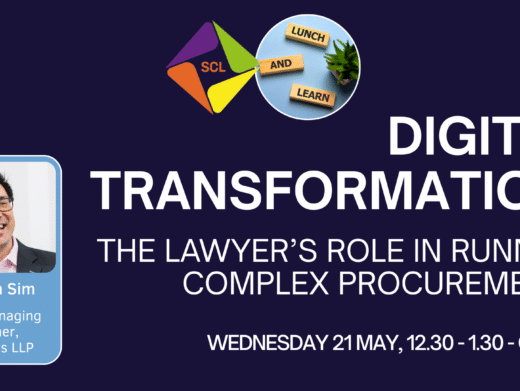Every silver lining has a cloud, and there can presently be little doubt as to the entertainment industry’s view of up and coming technologies and the Internet – a dark grey cloud threatening to bring a number of rainy days!
The year 2000 saw significant activity in the courts, particularly in the United States, where established entities in the entertainment industry sought to squash what they perceived as the unfair competition presented by fledgling companies such as Napster and My.MP3.com using the full force of copyright law. It has been said that online music plays will be worth an additional 3.3 billion dollars in sales to the music industry by 2005 and so it is little surprise that the major record labels in the USA have tried to nip some new developments in the bud by taking legal action against companies including Napster and My.MP3.com.
Napster
The case which has had the most publicity is the Napster case in which the most recent ruling was given on 12 February. In this case A&M Records and 17 other record companies filed a complaint for contributory and vicarious copyright infringement, violations of the California Civil Code Section 980 (a)(2) and unfair competition against Napster Inc. At the time when the complaint was filed (6 December 1999) Napster was described as ‘an internet start-up that enables users to download MP3 music files without payment’. Then, on 7 January 2000, Gerry Leiber, Mike Stoller and Frank Music Corporation also filed a complaint for vicarious and contributory copyright infringement on behalf of a putative class of similarly situated music publishers.
In the Summer of 2000 the District Court for the Northern District of California enjoined Napster ‘from engaging in or facilitating others in copying, downloading, uploading, transmitting or distributing Plaintiff’s copyrighted musical compositions and sound recordings … without express permission of the rights owner’. The Appeal Court then stayed the injunction pending completion of the appeal process and, on 12 February 2001, the US Court of Appeals for the Ninth Circuit dissolved the stay and ordered the injunction to be reinstated. Before discussing the decision further, it is worth recapping on Napster’s activities.
An MP3 file is a compressed digital representation of a musical recording which filters out certain parts of the music resulting in relatively minor loss of sound quality and resulting in significantly smaller files which require less time to transfer and are accordingly better suited to transmission over the Internet. Napster provides a ‘file swapping’ service for those who wish to collect MP3 music files. However, Napster does not maintain the recordings on its equipment; instead, the MP3 music files reside on the hard drive of third parties whilst Napster provides an index facility permitting one user to access the hard drive of another user. So, if I wanted to have an MP3 file for Nobody’s Perfect by Madonna, I would contact the Napster Web site and, once there, I would be directed to Joe Bloggs who maintains that file on his hard drive. Using the Napster system, I could contact Joe Bloggs and access his hard drive to download the file containing Nobody’s Perfect.
It is important to note that Napster would not itself actually reproduce Nobody’s Perfect. So, whilst I might be liable for direct copyright infringement because I had copied, or reproduced, Nobody’s Perfect from Joe Bloggs’ hard drive to my own hard drive or Joe Bloggs might be liable for having distributed a copy of Nobody’s Perfect to me, Napster could only be liable for contributory or vicarious liability as its liability would depend on my liability or that of Joe Bloggs.
One of the points which does appear to be at issue is that Napster users infringe at least two of the rights which are exclusive to copyright owners – the rights of distribution and of the production of copyright works. Uploading files for others to copy would appear to violate the distribution rights. Downloading files which contain copyright music would appear to violate the copyright owners’ reproduction rights.
Napster came up with several arguments in the case but it had two principal arguments. Its users did not infringe copyright because sharing musical compositions or sound recordings using the Napster service is protected by the doctrine of ‘fair use’. Second, it should not be held responsible for its users’ infringing conduct, having no knowledge of infringement (since the Napster system is not capable of distinguishing between MP3 files which are copyright protected and those which are not). Another argument relating to non-infringing use was mainly based on a very small number of new artists using Napster as a way to distribute performances to the public without being filtered through major publishers; these artists consent to Napster distributing their work as it gives the artists access to the public. Copying of those works is therefore not an infringement of copyright. However, the court decided that this use was too insignificant in amount to enable Napster to use the defence on non-infringing use.

Fair Use
Napster’s fair use argument was based on what it alleged was ‘personal use’ (i.e. the use of Napster to make a copy of a CD which the user had already purchased so that the user could then transfer the songs from, say, his home computer to, say, a work computer), but the court again considered these uses to be too insignificant in the context of other massive copying. The fair use argument was also based on what Napster referred to as ‘space shifting’ which it tried to liken to the time shifting of video recording. In this context it is worth looking back at the 1984 case in the US of Sony Corporation v Universal City Studios. In that case the Plaintiffs took action against the manufacturers of the Betamax video recorder in relation to contributory infringement and it was decided by the Supreme Court in the US that ‘time shifting’, by which it meant recording television programmes on a video cassette for viewing at a later time, was allowed under the fair use doctrine provided that it was done by private individuals for personal use.
In a similar case in England in 1988 (CBS Songs Limited v Amstrad Consumer Electronics plc), Amstrad was sued on the basis that, by offering a hi-fi for sale to the public which incorporated a facility for tape-to-tape recording, it was authorising and inciting members of the public to infringe the copyright on pre-recorded tapes as the hi-fi unit was capable of copying from one tape to another in half the normal playing time. Unlike digital copying, copies made using tape equipment would degrade with each generation and the House of Lords rejected the arguments of CBS on the grounds of remoteness of damage.
A further case to consider is the 1999 case of RIAA v Diamond Multimedia Systems Inc where it was stated that the portable MP3 player known as Rio ‘‘merely makes copies in order to render portable, or ‘space shift’ those files that already reside on a users hard-drive.’’ The Appeals Court in the Napster case distinguished the Sony and Diamond cases because, it said, the methods of shifting in those cases did not also simultaneously involve distribution of the copyright material to the general public.
However, all may not be doom and gloom for Napster. The Appeals Court stopped short of granting an injunction which would have the effect of shutting down the whole of Napster’s service and the door has been left ajar for a possible Sony-type defence in the future. The ambit of the ruling is to prevent Napster ‘from engaging in, or facilitating others in copying, downloading, uploading, transmitting or distributing’ music tracks which are the subject of copyright protection. In addition, one of its erstwhile opponents, Bertelsmann (German media conglomerate and one of the major record companies in the action against Napster) has announced that it is planning an early summer introduction of a subscription service of music Napster downloads over the Internet. In terms of the agreement with Napster, users would be charged a membership fee and royalties would be paid to artists whose material is swapped over the Internet with the help of Napster software. Napster has also formed a link with the online retailer CDNow in an attempt to prove that Napster technology can be used to promote music sales. CDNow (part of Bertelsmann) can track the origin of a user to the Napster site and can also track whether that user makes a purchase. It has yet to be announced whether Napster will benefit financially from any sales.
Scour
It is not only the music industry that believes that the new technologies constitute a serious threat. The Motion Picture Association of America has also issued a number of lawsuits against Internet companies in respect of alleged copyright infringement. So far the film industry has suffered less than the music industry because movie files are too big to be uploaded and downloaded efficiently but, with the advent of high speed broadband Internet access combined with emerging technologies, some of the barriers to trading in films are falling fast.
In July last year the MPAA raised an action against Scour.com requesting both damages and an injunction. Scour operates a file-swapping service which lets users swap film and other multi-media files by using the Scour exchange programme and, in a similar way to Napster, Scour’s users search for files by using a central server and then retrieve them directly to their own hard drives. It is Scour’s contention that it offers a legitimate service, arguing that its exchange programme is one which falls within the ‘safe harbour’ liability exemption which is provided by the Digital Millennium Copyright Act of 1998 (a US statute). Both DMCA and the draft Directive on the Harmonisation of Certain Aspects of Copyright and Related Rights in the Information Society provide for implementation of the WIPO Copyright Treaty and WIPO Performance and Phonograms Treaty and both include the safe harbour provisions for ISPs and prohibitions on technologies which circumvent copyright.
Legal Developments
It has already been commented in the US that the DMCA is already out of date and one must question whether the European Directive will be out of date as soon as it comes into force, given the speed of development of new technologies. By the time it comes into force, five years will have passed since the WIPO treaties of 1996 and, in a world where one terrestrial year is said to be equivalent to seven Internet years, that is simply too long.
In the UK, the law of copyright dates back to the 1500s when The Stationers Company of London was given a Royal Charter enabling it to grant a limited form of copyright in relation to published editions of books. As technology moves on, the law of copyright tries to change in order to keep up with developments but the legal processes move slowly and, after intensive lobbying by copyright owners, we often end up with laws which favour copyright owners at the expense of both consumers and artists, whilst anticipating that every digital transmission will start off life as an offence.
We are living through a technological revolution in all areas of Internet life. In these days of technological advances, will curbing Napster’s activities really make a difference to what is happening to music on the Internet? Clamping down on Internet entrepreneurs and on consumers will not solve the problem. With Napster being the thin end of the wedge as systems such as Napigator, Freenet and Gnutella continue to proliferate, the present ruling in the Napster case looks to be too little for copyright owners, too much for consumers. So I leave you with a single question: Has the law of copyright passed its sell-by date or have Internet entrepreneurs simply stolen a march on the entertainment industry?
Joanna Boag-Thomson is Head of Shepherd & Wedderburn’s Technology and IP team in Glasgow.




